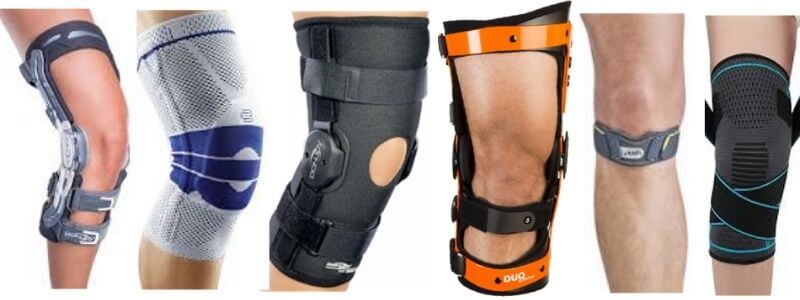Knee injuries are some of the most common for those who workout regularly. Understanding how to prevent such injuries is key to maximizing your workout routine. However, if you have suffered such injuries in the past, having the proper orthopedics support can help you avoid new knee injuries in the future.
The place to begin is with orthopedic surgeons who can provide sound advice on how to treat, support, and prevent injuries from happening. This includes managing pain so that you are not creating conditions which might cause the knee injury to reoccur. What follows is some advice on how to maximize your workouts while minimizing the chances of suffering from further injuries.

Bracing
The most common way to prevent knee injuries and to help injured knees to properly heal is the
knee brace. The brace is designed to minimize the sideways motion that causes many types of knee injuries. The knee is designed to bend backwards and even forwards to a certain degree, but the ligaments and tendons are not designed to go sideways.
Braces can be made of hard plastics or softer, more flexible materials depending on whether you are recovering or just preventing an injury to the knee.
Anti-Inflammatory Medication
NSAIDs or Non-Steroid Anti-Inflammatory Drugs such as naproxen or ibuprofen are designed to reduce both pain and swelling. The reduction of swelling is important because it provides greater room for movement in the knee which reduces the chances of injury.
In addition to the use of NSAIDs, you should take some commonsense approaches to avoiding knee injuries if you are experiencing signs of difficulty.
Elevate the Legs: Do this after a workout to reduce swelling.
Compression: Some knee braces or sleeves will hold together the knee to reduce swelling.
Ice: Adding cold compresses can reduce swelling as well.
Rest: Know when to slow down or even stop running to reduce wear.
Knee Replacement
Only when the knee is beyond standard treatment and surgery is partial replacement advised. This is when a section of the knee is removed and replaced by a component made from metal or plastic. The most common occurrence of knee replacement is when osteoarthritis is present which makes standard treatments unworkable.
Consulting with your orthopedic surgeon should be performed when you start suffering from acute pain or have experienced an injury to your knee. If you have yet to experience an injury or feel pain beyond the standard soreness, there are some things you can do to minimize the chance of injury.
Prevention
The first step to preventing knee injuries is to wear the proper shoes which provide the right support. Shoes that do not properly fit or are worn down on one side may become the cause of knee injuries. But there are other things you can do to prevent injuries from occurring.
Stretching: To warm up the muscles, tendons, and ligaments.
Sprint Drills: To train the muscles for running.
Squats: An excellent strength-training drill to reduce injuries.
Exercise: General resistance exercises for the legs.
By preventing knee injuries through the use of
orthopedics support, proper training, and strengthening of the muscles, you can get more out of your exercise program.
